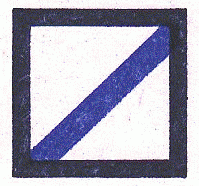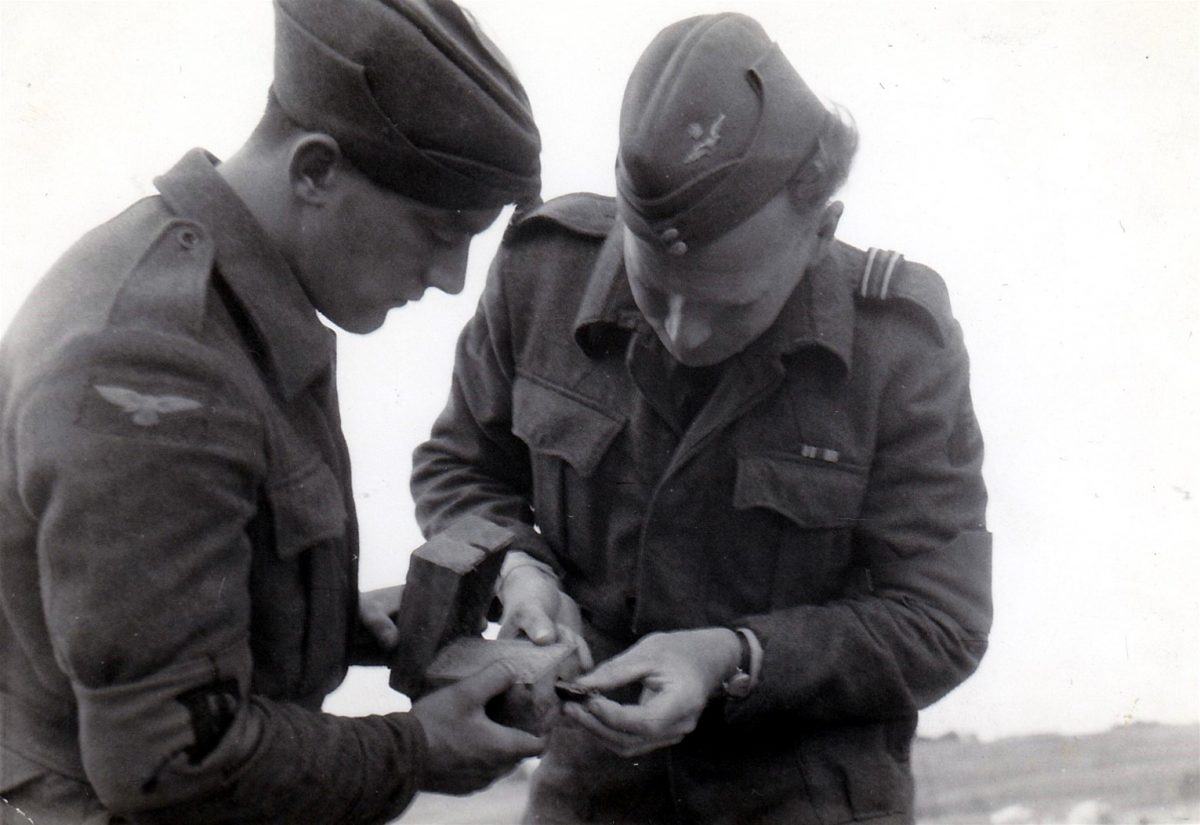“OVERLORD” and “NEPTUNE”
There were two phases to Operation “OVERLORD”. The first phase was the assault landing on the Normandy beaches and the capture and development of airfield sites and the port of Cherbourg. The second phase was the capture of territory up to the river Loire and the ports of Brittany.
The first phase, i.e. the assault phase, was Operation “NEPTUNE”.1 Beach units were created for the assault phase of operations and their job was finished when the beaches were no longer being worked or when the normal organisation of supply and movements was established. Therefore, strictly speaking, it was Operation “NEPTUNE” that the R.A.F. beach units were involved with in Normandy.
Operation “NEPTUNE” officially ended on 30th June 1944.2 Due to the fact that the R.A.F. beach units continued to work in July and were not disbanded until August and because the overarching code name ”OVERLORD” is used more often, so information about R.A.F. beach unit involvement in the Normandy invasion is identified here as Operation “OVERLORD”.
Beach Squadrons.
(iv) Three R.A.F. Beach Squadrons, Nos. 1, 2 and 4 R.A.F. Beach Squadrons, will work with the Army Beach Organisation to supervise the discharge of R.A.F. personnel, vehicles and stores, and Movement to the forward area of all Units.
(v) The Beach Squadrons will be dressed in blue battle dress and wear red brassards on the right arm.
Personnel and M.T. Transit and Assembley Areas.
(vi) Personnel and vehicles will pass across the beaches in accordance with sign posted instructions and will proceed through the personnel and M.T. Transit Area to the R.A.F. Section of the Army Assembly Area. Thence they will proceed to their overseas location on the instructions of the Beach Squadron representative. Route directions to their location will be provided by 83 Police Unit parties at the exists (sic) of Assembly Areas.
[83 Group Administrative Instructions for Operation “OVERLORD”,
Section 107, Disembarkation and Beach Organisation.]
Beach Organisation for the Invasion of Normandy
To control and facilitate the landing, assembly and onward dispatch of personnel, stores and equipment across the invasion beaches, the British and Canadian sectors were organised into three Beach Sub Areas. 101 Beach Sub Area covered the SWORD assault area, 102 Beach Sub Area covered the JUNO area and 104 Beach Sub Area covered the GOLD area.
These Beach Sub Area organisations were responsible for setting up Beach Maintenance Areas in which there were dumps to hold the petrol, ammunition, rations etc. that were being landed, and assembly areas for the arriving personnel and their vehicles. Also to be organised was traffic in the opposite direction, i.e. the removal to the U.K. of casualties, prisoners of war and salvaged equipment.
To achieve all this, a large organisation was required composed of specialists from all three of the armed services. The units selected for this work, apart from their own technical training, all received Combined Operations training and practised alongside each other in the months preceding the invasion.
Each Beach Sub Area organisation was composed of Royal Navy Beach Commando units, Army Beach Groups, an R.A.F. Beach Squadron and an R.A.F. Beach Balloon Squadron. These units were under the overall command of an Army Colonel supported by a Beach Sub Area Headquarters.
British Beach Organisation for “OVERLORD”
| SWORD | JUNO | GOLD |
|---|---|---|
| 101 Beach Sub Area | 102 Beach Sub Area | 104 Beach Sub Area |
| F and R RN Beach Commando | L, P and S RN Beach Commando | J, Q and T RN Beach Commando |
| 5 Beach Group 6 Beach Group (reserve) | 7 & 8 Beach Group 4 Beach Group (reserve) | 9 & 10 Beach Group 36 Beach Brick (reserve) |
| 976 RAF Beach Balloon Squadron (50 & 53 B. B. Flights) | 974 RAF Beach Balloon Squadron (51 & 52 B. B. Flights) | 980 RAF Beach Balloon Squadron (54 & 55 B. B. Flights) |
| 1 RAF Beach Squadron (101 & 102 Beach Flights) | 2 RAF Beach Squadron (103 & 104 Beach Flights) | 4 RAF Beach Squadron (107 & 108 Beach Flights) |
The Royal Navy Beach Commandos controlled the arrival and departure of vessels that were landing their cargoes on the beaches. In each R.N. Beach Commando was a Principal Beachmaster (P.B.M.), an Assistant Principal Beachmaster and two or three beach parties each consisting of a Beachmaster, two Assistant Beachmasters and about 20 seamen.
The Army Beach Groups were the main units in a Beach Sub Area. The core of each Beach Group was an infantry battalion. The infantry battalion provided a fighting capability for mopping up elements of the enemy that were still active in the beach areas after the assault forces had moved inland and for defending the beaches against possible counter-attack. They also provided a large labour force for the tasks of beach organisation. For the specialist tasks in beach organisation, each Beach Group included units of the Royal Engineers, Royal Army Service Corps, Royal Army Ordnance Corps, Royal Electrical and Mechanical Engineers, Royal Army Medical Corps, Military Police and the Pioneer Corps. The commander of the infantry battalion (a Lieutenant Colonel) was the overall commander of the Beach Group.
The R.A.F. Beach Squadrons were each composed of a Headquarters and two Beach Flights so that the Headquarters could work with the Beach Sub Area Headquarters and a Beach Flight could be attached to each of two Army Beach Groups. The R.A.F. Beach Balloon Squadrons were organised in a similar way.
The operation of the Beach Sub Areas developed in stages, On D-Day a Beach Group (and attached R.N. and R.A.F. personnel) landed with each assault brigade and the rest of the Beach Sub Area units followed. The Beach Maintenance Areas became established and control of the Beach Sub Areas passed from the assault Divisions to their respective Army Corps. Eventually Second Army became responsible as the Lines of Communication organisation was established and the Beach Maintenance Areas became part of a large scale Rear Maintenance Area.
101, 102 and 104 Beach Sub Areas, along with H.Q. 4 Lines of Communication Sub Area (set up to control Arromanches Mulberry harbour and Port en Bessin harbour) all came under the control of H.Q. 11 Lines of Communication Area.
As far as the R.A.F. Beach Squadrons and Beach Balloon Squadrons were concerned, although they were attached to and working as part of the Beach Sub Areas, they were under the operational and technical control of Headquarters, 2nd Tactical Air Force. For administrative purposes they were to be under the command of No. 85 (Base) Group when it was sufficiently formed but, in Normandy, they were initially under the command of No. 83 Group.
As the first R.A.F. formation on French soil, No. 83 Group had greater than normal administrative responsibilities and its headquarters was in command of all R.A.F. units ashore throughout June and July. On 3rd August 1944, 2nd Tactical Air Force opened its main headquarters on the continent at Le Trouquay, and on 10th August it took over from No. 83 Group the general responsibility for all R.A.F. formations in Normandy.
1 Ellis, L.F., “Victory in the West Vol. 1, The Battle for Normandy”, H.M.S.O., 1962, p63
2 ibid p294

